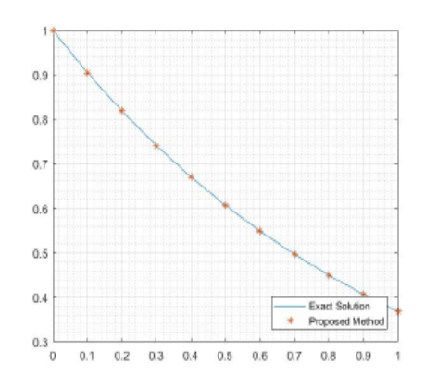


Indian Journal of Science and Technology
Year: 2024, Volume: 17, Issue: 8, Pages: 732-740
Original Article
C Kayelvizhi1, A Emimal Kanaga Pushpam2*
1Research Scholar, Department of Mathematics, Bishop Heber College (Autonomous), Affiliated to Bharathidasan University, Tiruchirappalli, 620 017, Tamilnadu, India
2Associate Professor, Department of Mathematics, Bishop Heber College (Autonomous), Affiliated to Bharathidasan University, Tiruchirappalli, 620 017, Tamilnadu, India
*Corresponding Author
Email: [email protected]
Received Date:20 December 2023, Accepted Date:20 January 2024, Published Date:20 February 2024
Objectives: The main objectives of this work are to solve Neutral Delay Differential Equations (NDDEs) using Galerkin weighted residual method based on successive integration technique and to obtain the Estimation of Error using Residual function. Methods: The Galerkin weighted residual method based on successive integration technique is proposed to obtain approximate solutions of the NDDEs. In this study, the most widely used classical orthogonal polynomials, namely, the Bernoulli polynomials, the Chebyshev polynomials, the Hermite polynomials, and the Fibonacci polynomials are considered. Findings: Numerical examples of linear and nonlinear NDDEs have been considered to demonstrate the efficiency and accuracy of the method. Approximate solutions obtained by the proposed method are well comparable with exact solutions. Novelty: From the results it is observed that the accuracy of the numerical solutions by the proposed method increases as N increases. The proposed method is very effective, simple, and suitable for solving the linear and nonlinear NDDEs in real-world problems.
Keywords: Galerkin Weighted Residual method, Polynomials, Hermite, Bernoulli, Chebyshev, Fibonacci, Successive integration technique, Neutral Delay Differential Equations
© 2024 Kayelvizhi & Pushpam. This is an open-access article distributed under the terms of the Creative Commons Attribution License, which permits unrestricted use, distribution, and reproduction in any medium, provided the original author and source are credited. Published By Indian Society for Education and Environment (iSee)
Subscribe now for latest articles and news.